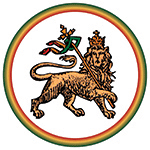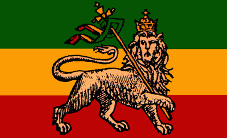The Autobiography of Emperor Haile Sellassie I
CHAPTER 8
From the coronation of Queen Zawditu up to Ledj Iyasu's defeat at Wallo and subsequent escape
Since it had been resolved in Council that Queen Zawditu's coronation should take place on 4th Yakatit 1909 (= 11th February, 1917), we began passing on instructions to all chiefs that everything necessary for the celebration of the coronation be prepared. There were invited to come to Addis Ababa for the coronation the governor of Bagemeder and Semien, Ras Walda Giyorgis, the governor of Sallale, Borana and Darra, Ras Kassa, the governor of Gojjam, Ras Haylu, the governor of Tigre, Ras Seyum, and other governors of the large provinces. The political atmosphere at that time was grave for invitations of this kind.
Respectful invitations to come to the coronation were sent to the governors of foreign countries coterminous with Ethiopia, i.e. the governors of the British Sudan and of British Somaliland as well as the governor of French Somaliland.
When all those invited had arrived, on Sunday the 4th of Yakatit (= 11th February 1917), in the great cathedral, the Church of St. George, Queen Zawditu was anointed with the oil of kingship at the hands of the Archbishop, the Abuna Mattewos, and wore the Imperial Crown.
After this, according to the law of the Ordinances of Kingship, it was once more proclaimed, in front of those assembled within the precincts of the church, that Queen Zawditu sitting on her father's throne was assuming her reign and I was becoming Crown Prince and Regent Plenipotentiary.
Eight days later, on 11th Yakatit (= 18th February), Ras Walda Giyorgis was crowned by Queen Zawditu and proclaimed Negus of Gondar. For the sake of his kingship, authority over the Tigre province was added for his enhancement.
In making once again proper balances and adjustments for provincial appointments and demotions, We gave to Ras Wale his erstwhile governorate of Yajju; to his son, Ras Gugsa (Wale), the Sayent region; and to Ras Abata the seven tribes of Wallo, Negus Mika'el's former governorate.
When Ledj Iyasu heard of the appointments and dismissals that had been made, he hurried down from Magdala and marched to Yajju; as the news reached us that he had clashed with Ras Wale's (younger) son, Dejazmatch Amade, defeating and capturing him, it became clear to us that henceforth there could be no peace or security unless Ledj Iyasu were seized. We, therefore, arranged for a large army, under the command of Our War Minister, Fitawrari Habta Giyorgis, to proceed to Wallo, to search strenuously for Ledj Iyasu and to capture him.
When Fitawrari Habta Giyorgis reached Wallo, he heard that Ledj Iyasu was collecting an army while roaming the country here and there; he then took the city of Dessie and began waiting for Ledj Iyasu there. The principal commanders with Fitawrari Habta Giyorgis were Ras Abata and Ras Kassa; and with them were Dejazmatch Kabbada Tasamma and Dejazmatch Hayla Maryam Lamma as well as Dejazmatch Makuriya Garmame and other military commanders.
After Ledj Iyasu had collected a sizable army, he appointed his father's army commanders, i.e. Ras Yemar as commander in chief and Fitawrari Serah Bezu as deputy commander. On 21st Nahase 1909 (= 27th August 1917) early in the morning, he launched an attack, joined battle, and fierce fighting took place. Fitawrari Habta Giyorgis, without leaving his walled emplacement, resisted vigorously and emerged victorious, while Ras Yemar was captured. But Fitawrari Serah Bezu died in the battle. When Ledj Iyasu heard of the capture of Ras Yemar and of the death of Serah Bezu, he escaped galloping off on his horse quite alone and made for the countryside. The news of the victory was transmitted by wire the same day, and there was great rejoicing at Addis Ababa. But since in this world joy and sadness are mixed, Ras Abata, who had been ill for some time, rose on the day of the battle, refusing to stay in bed in his tent, and spent the day fighting; as a consequence his illness became worse, and on 6th Teqemt 1910 (= 16th October 1917) he died. When the death announcement reached us there was great mourning. We arranged for his body to be taken to Dabra Libanos, went down there Ourselves and had him buried with high honours. As a memorial We caused his sword to be buried with his body.
Electronic edition created and published online by members of the
Emperor Haile Sellassie First Theocracy Reign
Order of the Nyahbinghi

Sept 10, 2016
